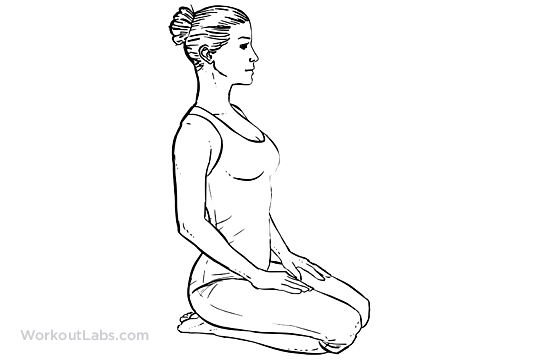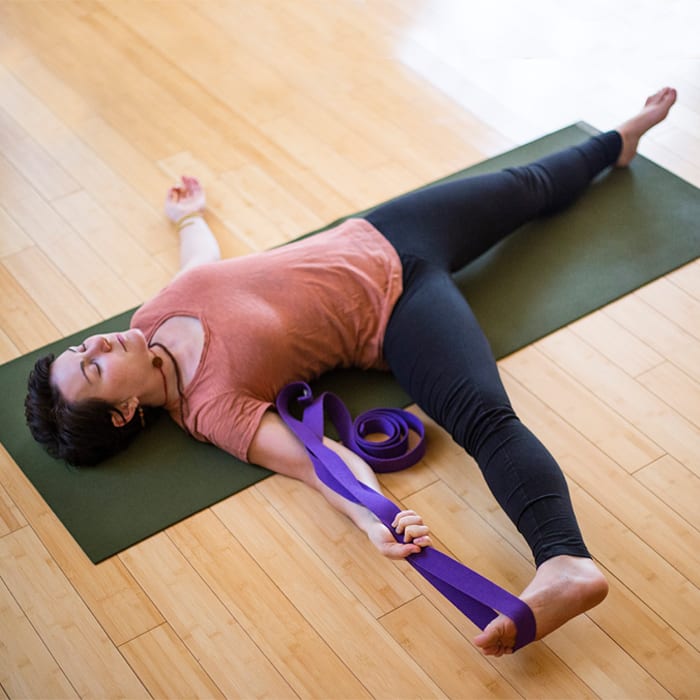
The Yoga Sutras are 196 Sanskrit sutras that Patajali has collected. The texts were written in Sanskrit by Patanjali (a Sage who synthesised wisdom from the older traditions of Yoga) and were assembled in the early century CE. Originally a work in progress, these sutras are now considered one of the world's most important sources for the practice of yoga.
Four chapters make up the Yoga Sutras. The first chapter focuses on enlightenment. Four chapters follow that discuss the journey to the goal. The 52 sutras detail the benefits meditation, kriyas and niyama (pilates) have. The 54/55 sutras detail Ashtanga and Karma yoga. The last two sutras explain the benefits of meditating on a regular basis.
Patanjali’s Yoga Sutras are regarded as the foundational text and basis of yoga. They are composed of 196 short verses. They are believed to be from 400 B.C. Scholars believe Patanjali was not the author of yoga, but a great exponent of it. The sutras can be divided into five levels or padas.
Samadhi is eighth limb. This is the highest level of yoga. Nirbija, also known to be seedless contemplation or the state of complete separation from the spirit, is described in the Sutras. This means that there is no ego, matter or mind.

Yoga is a spiritual pursuit, and the Yoga Sutras offer the basis for it. It is a way to observe the principles of nature. The three natural qualities of nature are sattva and rajasa. The first and most important quality of nature is sattva, yama. It is also the hardest to attain. It's difficult to understand the purposes of the others three, but ahimsa may be the most important.
The Yama and Niyama sections are the three parts of the first book of Yoga Sutras. The first book is a biography on Patanjali. It's a biography and life story of the famous yogi. The most important yoga sutras can be found in the second volume. The books also have information about the history, practice, and development of yoga. The sutras contain detailed discussions of the history and origins of the practice.
In the original text the Sutras from Patanjali are split into four distinct sections: Mahabhashya. Pranayama. Bhashya. The third chapter, the Mahabhashya, is an important chapter in the book. It describes the principles and practices of yoga, and the stages of enlightenment. The fourth chapter is the defense of Panini.
The Yoga Sutras, which are Patanjali's most beloved part of the Patanjali-inspired text, are found in the second half. Although the words are in the Sanskrit language, the meaning of the Sanskrit word sutra is "thread". The Sutras form part of Hindu Scripture. It is the base of yoga. It was composed between 250 BCE and early centuries in the first millennium.
Yoga Sutras can be dense, complicated, and difficult to understand in terms of content and language. A commentary on the Yoga Sutras is recommended due to their complexity. But it is not an essential part of the Yoga sutras. The translations of Yoga sutras are subject to some debate, but the core of the book is the text. Some versions of this book use the term "asana", to describe a single position, while others use it to indicate multiple postures.

The Yoga Philosophy Sutras by Patanjali, known as the Yoga Philosophy of Patanjali, are considered to be among the most important yogic texts. The Sutras are a valuable resource for those who want to practice yoga in today's world, or learn old techniques. These Sutras are relevant to modern yoga. Ultimately, it's your choice how to practice the Yoga Sutras. The Yoga Philosophy of Patanjali offers many benefits.
Many sacred texts include Patanjali's insight. His writings define the eight limbs of yoga, the five types of yogi bodies, and the five qualities of a yogi's mind. These Sutras offer a wealth of inspiration to modern yogis and should be read. This book will explain the basic principles and practices of Yoga.
FAQ
Eggs are good for us.
All the nutrients that the body needs are found in eggs. It is also good for maintaining strong bones, healthy heart and lungs, as well as stable blood pressure.
Eggs are a good source of protein and vitamins A, B12, D, E K, calcium, phosphorus iron, zinc copper, magnesium selenium and even riboflavin.
The cholesterol content of egg yolks is high. However, it does not contain saturated fat. Eggs are lower in saturated fat than other foods.
They are also low-calorie and high in sodium. You can make them in any way you like. You can fry, poach, scramble, boil, hard-boil, and bake them.
They are very nutritious and easy-to-prepare.
Each day, you should consume at least 2 whole eggs. If you dislike eating eggs, you should add them to your diet.
Essential nutrients are provided by eggs. You can add eggs to your daily diet now.
How many times a week should I exercise?
It depends on how much time you have available and what type of exercise you prefer. An average guideline is to do moderate-intensity aerobic activity 3 to 5 days per semaine. It is important to not overdo it. To get the best results from your exercise, it is important to be consistent.
Which exercises are best for me?
It really depends on the type of fitness goal you have. Some people concentrate on endurance activities such running, cycling, swimming. Others like lifting weights or using resistance band. There are many exercise programs on the market today. Choose an option that suits your lifestyle.
What diet supplement is best to lose weight?
Losing weight requires both diet and exercise. Some people find that supplements can help them along the journey.
Research suggests that omega-3 fats may aid in weight loss. Omega-3 fatty acids are essential fats that are vital for brain function, cell membrane integrity, and other functions. They can be found as a part of seafood such as tuna, salmon, shrimp, and cod live oil.
Green tea is being studied for its potential benefits in weight loss. The antioxidants in green tea, catechins and other compounds may increase metabolism and promote weight loss.
Statistics
- An estimated calorie range for moderately active adult males falls between 2,200 to 2,800 calories per day, depending on age. (eatright.org)
- 10 pounds in a month is likely during a lean bulking phase, especially for beginners. (muscleandstrength.com)
- By John Thompson Take a whopping 38% off a set of PowerBlock Pros. (menshealth.com)
- Are You One of the 20% of Guys (mh.co.za)
- Candidates and applicants must pass all four tests at 70% (minimum level) to graduate from Basic Deputy U.S. Marshal (BDUSM) Training. (usmarshals.gov)
External Links
How To
What's the best food for men?
Men should consume five portions of fruits and veggies per day. They must also avoid red meat and fast food.
Fruits and veggies are packed with antioxidants that protect against cancer, cardiovascular disease, and other diseases.
Vegetables include broccoli, cauliflower, carrots, spinach, tomatoes, peppers, cucumbers, lettuce, mushrooms, etc.
Also, beans and peas are rich in protein and fiber.
A great source of omega-3 fatty acid is nuts and seeds. The brain functions and production of hormones require omega-3 fatty acids.
Fish is another great source of omega-3s. Fish contains more mercury than most other meats. However, fish liver oil does contain fewer toxins.
For normal growth and development, Omega-6s are required in vegetable oils such as soybean, sunflower, safflower and cottonseed oils.
Poultry is a good source of lean protein. The best meat to eat is chicken breast.
Lean beef is low on saturated fats, cholesterol, and other harmful substances. Avoid eating too many red meats as iron intake can increase the risk of developing prostate cancer.
Avoid sausages and hot dog. These processed meats contain nitrates that can cause cancer.
Exercise is essential to maintaining good health. But what if you're already working out regularly? Is there anything else you can do to maintain or improve your physical condition?
The answer is yes To get the most from your workouts, there are several things you can do. These are some ways to make your workouts more enjoyable.
Begin slowly. Injure yourself if your first session is too intense. Start slow and build your intensity slowly.
Before and after. Stretching will help loosen tight muscles, reduce soreness, and improve flexibility. You can stretch standing up, sitting down, or walking around.
Cool down. This is especially important for cardio exercises. It is important that your body has time to recover from each session so it doesn’t become exhausting. Cool down by walking slowly, taking deep breaths or going for a swim.
Hydrate. Drinking lots of fluids can keep you hydrated, and help reduce muscle cramps. Water is the best choice, but you can also drink sports drinks.
Be healthy. Be sure to eat enough calories each day. You will be more focused and energized if you eat regular meals throughout your day.
Get enough rest. Get enough rest to feel refreshed and ready to tackle your next training session. The best way to heal tissues is through sleep.